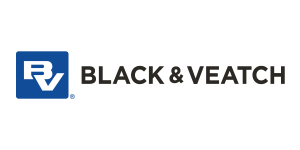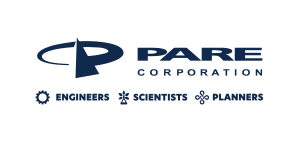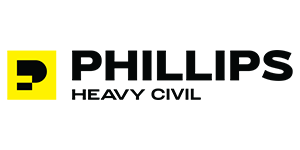Sliplining Low-Level Conduits: Agenda
April 11, 2023
12:00 PM - 2:00 PM Eastern
-
Conduits through Embankment Dam Design Review
- Dam Failure Modes
- Most can be associated with conduits through embankments
- Webinar Definitions
- Low-Level Conduit Failure Example
- Design Considerations
- Hydraulic Capacity
- Structural Considerations
- Material selection
- Environmental conditions
- Joint integrity
- Material selection
- Geotechnical Considerations
- Foundation of conduit
- Soil compaction adjacent to and above conduit
- Seepage Control
- Internal drain system/filter diaphragm
- DO NOT PRESSURIZE YOUR PIPE
- Inlet Protection
- Reduces potential for obstructions or damaging debris
- Energy Dissipation
- Dam Failure Modes
- Conduit Evaluation Procedures
- FEMA 484 – Chapter 9
- Inspection Types
- Initial or formal
- Established by regulatory agency and/or owner
- Dam Safety; Reclamation; FERC; NRCS; USACE
- Review of design and construction data, as well as inspection and instrumentation records.
- Observations during first filling after construction
- Following major modifications (replacement; embankment repair)
- Established by regulatory agency and/or owner
- Periodic or intermediate (quarterly to annually)
- Focus on current status of conduit
- Routine (weekly to quarterly)
- Performed by operating personnel during other routine tasks
- Special or Emergency
- During or after unique circumstances or events
- Droughts
- Floods
- Earthquakes
- Inspections should be staggered so that components are observed during every season of the year.
- During or after unique circumstances or events
- Initial or formal
- Safety Procedures
- Lower or drain reservoir or outlet channel
- Structural adequacy of controlled inlets (gates, valves)
- Confined space protocols; ventilation
- Exterior observations
- Whirlpools in reservoir
- Sinkholes, depressions, slides, sloughs
- Seepage along exterior of conduit including color
- Seepage from interior of conduit including color
- Evidence of soil migration at the end of the conduit or accumulating in outlet channel
- Unusual noises or vibrations
- Pulsating or unstable flow
- Inexplicable reductions in discharge capacity
- Interior observations
- Man-Entry versus remote
- Conduits with diameters 36 inches or larger can be inspected by man-entry if proper OSHA precautions are taken
- CCTV is most common remote method
- Ponding water (indicator of settlement)
- Crack mapping (direction, length, and width)
- Joint separations between conduit sections and at connections to entrance and terminal structures
- Corrosion to include exposed reinforcement
- Discoloration or staining
- Damaged protective coatings
- Chemical deterioration
- Leaks into or out of the conduit
- Misalignment of conduit sections
- Voids behind pipe walls near observed cracks, joint separations, or misalignments
- Spalled concrete
- Drummy or hollow-sounding concrete
- Erosion or abrasion damage
- Cavitation damage
- Blockages
- Man-Entry versus remote
- Kansas State University Conduit Evaluation Tool
- Observations made of watershed dams in Kansas with various principal spillway conduits
- CMP and C-76 RCP (lowest rated; shortest expected life)
- CMP Issues: Corrosion; joint leakage
- C-76 Issues: Cracking
- Lined welded steel and C-301 concrete pipe (longest expected life)
- Relationships between expected conduit life and environmental conditions
- CMP and C-76 RCP (lowest rated; shortest expected life)
- Observations made of watershed dams in Kansas with various principal spillway conduits
- Conduit Deficiencies Requiring Action
- FEMA 484 Section 9.5.2.2
- Deterioration
- Obstructions
- Joint offsets and separations
- Defective Joints
- Cracking
- Introduction to FEMA 484 and FEMA 675
- Best practices for design, construction, problem identification and evaluation, inspection, maintenance, renovation, and repair
- FEMA 484 – Technical Manual: Conduits through Embankment Dams (September 2005)
- FEMA 675 – Technical Manual: Plastic Pipe Used in Embankment Dams (November 2007)
- Carrier Pipe Selection Considerations
- Advantages and Disadvantages of Sliplining
- Available exterior diameter
- Structural considerations
- Loads and stress imposed by embankment and grouting
- Hydraulic considerations
- Spillway capacity during design storm event(s)
- Drawdown requirements
- Material types
- HDPE, DIP
- Jack & Bore (Steel Casing with Concrete Carrier)
- Grout Mix Design & Installation
- Grout Mix
- Cementitious Grout
- Water, Portland cement, fly ash, plasticizer
- Fluidifying and expansive agent
- Cellular Grout
- Foam, high porosity
- Not recommended for use in embankment dams per FEMA 675
- Cementitious Grout
- Installation
- Grout ports and vent configuration; staging consideration
- Centralizers and spacers
- Bulkheads
- Pumping considerations
- Grout pump pressure
- Hydrostatic pressure
- Quality Control
- Bleeding
- Mud balance
- Compressive strength
- Grout Mix

































